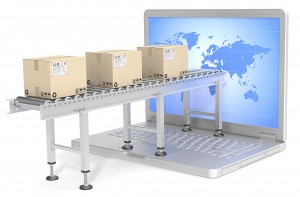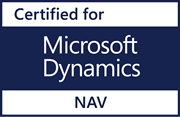EDI Electronic Data Interchange 101
Posted on February 2, 2016What is EDI?
Electronic data interchange (EDI) is an electronic communication system that provides standards for exchanging data via any electronic means. By adhering to the same standard, two different companies, even in two different countries, can electronically exchange documents (such as purchase orders, invoices, shipping notices, and many others).*
Why do I need EDI?
- To get the order.
As a distributor EDI gives you the ability to do business with large retailers. In today’s market place most large retailers and other trading partners require business transactions, including fulfillment, to be conducted via EDI which basically means suppliers have no choice about EDI compliance. If they don’t speak EDI they can’t get the order.
- To increase accuracy and achieve labor savings with less risk.
Since it is an automated process EDI can eliminate manual data entry errors and reduce labor costs. The number of hours it takes for a person to manually process an order is significantly reduced, and when it is done in an automated fashion there’s no room for human error when re-keying information or copying and pasting data from one form to another.
- To reduce or eliminate chargebacks.
If you’re not using EDI you run the risk of getting hit with hefty chargebacks from your Trading Partners. One little mistake when it comes to inventory management or meeting Trading Partners packaging, labeling and shipping requirements, and you’ll be penalized with chargebacks. On the plus side, many EDI systems today offer automated management-by-exception features which allow you to catch errors before they happen.
Why do Retailers Require EDI?
While EDI may sound like a lot of hoops for distributors to jump through, large retailers have sound reasons for these requirements. While their main objective is to streamline and remove as much cost as possible from the process, an equally strong motive is to be sure that everything is shipped to the right location no small feat when you’re dealing with hundreds or thousands of store locations.
For example if a purchasing department buys product intended for a specific store, they’ll want the supplier to ship it to a Distribution Center (DC) that serves that particular store. Once the product arrives at the DC its UCC label will play a key role in providing the DC workers with the information they need to be sure they put it into the right truck headed to that specific store location. It’s a lot of responsibility for one little label, hence the detailed methodologies and processes behind the system.
This cross-docking process involves an intricate choreography, and without specific EDI processes and rules in place, the system could easily go awry.
EDI Involves More Than Just Interchanging Electronic Data
It’s important to also keep in mind that the real scope of EDI extends beyond the data exchange. You still have to pick, pack, label and ship the products. With many EDI solutions that means using an ERP system and then printing labels from another system, entering Advanced Shipping Notice data on a web form in yet another system and ordering labels ?in advance– from another system.
One painless way to get around this is to have all your data in one system in one place. By embedding access to package carrier manifests from UPS, FedEX, USPS and LTL, such a system could easily be used to build the ASN without any outside, expensive, risky interfaces.
Going forward we’ll be covering lots of EDI productivity tips, industry trends and information on new Lanham EDI features, so be sure to subscribe to our blog for future posts on EDI solutions for your business.
*Wikipedia

